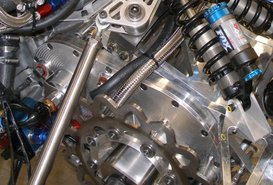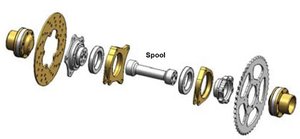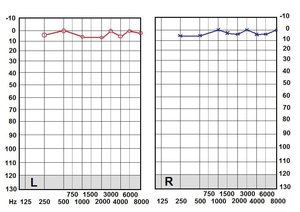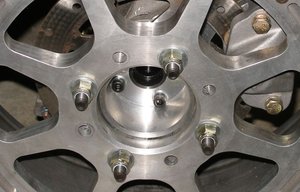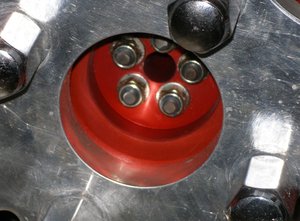Firstly, welcome to 2008. My best wishes to all for a prosperous new year and I look forward to catching up with you all in August at Hockenheim.
Seeing as I am currently on a short vacation, this months article will be a bit longer than usual as I have lots to tell you.
FSAE-A Design Finals
The Design Finals at FSAE-A in Melbourne featured 4 teams, in order of points, RMIT, Tokyo Denki, Wollongong and Uni of Western Australia. UWA arrived with an even more advanced car than we have seen before, so why didn't it win Design? Simply because it wasnt finished, something that all teams should understand is a basic requirement if they wish to be competitive. That UWA came back with a car fast enough to win overall from RMIT and Monash is a credit to the dept of commitment within the team.
Two matters concerned the Design Judges at FSAE-A. We had no less than 5 teams where the 95% mannekin did not fit in the car. I believe teams were ignoring that requirement as long as all their drivers fit in the car with the required 50mm Roll Hoop clearance.
Second concern of the judges was the level of complexity of some of these cars. The rules say...
“The intended sales market is the nonprofessional weekend autocross racer. Therefore, the car must have very high performance in terms of its acceleration, braking, and handling qualities. The car must be low in cost, easy to maintain, and reliable”.
...so it is questionable that some cars meet either the meaning or the intent of the rules.
The Design Judges look at complex cars and wonder how the Weekend Autocrosser can deal with a car, like UWA, where clutch and gearshift operation is computer controlled on a CAN BUS with no mechanical backup? To some degree the new FSG Cost event addresses this issue, something FSAE and FS should consider.
I am not being critical of UWA (or several other teams with similar levels of complexity) as they are working within the framework of the rules, but I do believe the organisers must address the issue before damage is done to the competition.
The Defence Force Academy (ADFA) won an award at FSAE-A for best endeavour. Having built a car with an epicyclic gear train, they had a catastrophic failure to their custom Torsen differential a couple of days before the event. A huge effort saw them construct a spool drive to run with their gear train. (see below)
A 'spool' is a direct final drive that does away with any differential action. When the ADFA drivers got to test their new spool, they found that, after some simple setup adjustments, the car was just as manoeuvrable as ever, maybe even moreso.
The Rubik's Spool
The University of Queensland won the dynamic events at FSG '06 whilst fitted with a spool (as shown below).
This car showed no more tendancy to understeer than any other car there, even when running on a wet track, so there must be something more to the situation.
The bugbear of FS car handling is understeer, teams sometimes making great design compromises (like driveshaft angularity) to move some weight to the front wheels.
Surely the use of a 'spool' drive would make the understeer even worse?
Well, not necessarily. Many successful race cars over the years have used a spool drive and any form of differential is actually banned in some formulas. If a team can overcome the dynamic downside of the spool drive, I cannot think of a better way to take about €1000 out of the cost and remove several Kg of rotating mass from the rear of the car. Please read on.
The term 'slip angle' refers to the actual direction of travel of a tyre, rather that the direction it is pointed, when fed a lateral load. The degree of slip angle changes relative to vertical load on the tyre. Up to the point of breakaway, the slip angle will be lower with a higher vertical load.
The vertical load is always greater on the outer wheel when the car is under cornering loads because of natural weight transfer. It follows that the outer slip angle will differ from the inner slip angle. This difference in slip angles imparts something of a 'differential' action to the rear wheels, even though they are locked together with the spool. If a team could optimise this difference in slip angles, it follows there would be no need for a physical differential.
To understand what is happening we must investigate all the inputs that will affect weight transfer in the chassis whilst cornering.
The most immediate effect is the diagonal weight transfer when the car is steered, caused by the effect of Caster and KPI. When the car is steered, the Caster effect presses the inside front wheel down into the track and lifts the outside wheel causing a diagonal weight transfer to occur. Centrifugal force causes weight transfer to the outside leaving the inside rear wheel as the 'lightest' on the car. This changes the difference in slip angles between the inner and outer rear wheels.
It is not necessary to actually lift a rear wheel like a GoKart in order to get the differential action needed, though a wheel may lift occasionally.
The diagonal weight transfer is affected by vehicle parameters such as:
 Vehicle mass distribution
Vehicle mass distribution- Track width front
- Track width rear
- Caster and KPI
- Scrub radius
- Roll axis and C/G
- Wheelbase
- Toe on the front and rear of the car
- Ackermann angle (toe change whilst steering)
so there are a lot of variables, rather like a Rubik's Cube, but like the cube, once the puzzle has been solved once, further solvings are much easier.
To present a car with a spool at Design will cause questions to be asked. Generally, the Design Judges will see the application of a spool as something of a 'cop-out', but if the subject is fully researched and the choice can be defended logically, there is no reason why use of a spool will cost Design Points.
In Design it is not enough to defend the choice on the grounds of cost saving and mass reduction. You must be able to defend the potential performance.
To do this, the team need to have a good understanding of the tyres they are using as well as all the kinematics and dynamics that will load those tyres on the track. Tyre information on most FS/FSAE tyres is available from the FSAE Tyre Testing Consortium at http://www.millikenresearch.com/fsaettc.html
This information will cost the team less than a differential and will arguably be of more value.
All the calculations in the world will not replace testing, so a team looking to optimise their car (spool or not) will need to do lots of testing, with an emphasis on tyre temperatures and driver feedback. One warning. In the chase for the optimum slip angle differences, do NOT toe out the rear wheels! This will make the car very unstable under brakes and easy to spin.
Benefits of a spool that neet not be defended are reduction of mass at the rear of the car, thereby helping front to rear weight balance. This will help the team avoid the temptation to excessively angle the driveshafts to reposition the weight split fore and aft. The weight reduction is rotating mass, so there will be additional benefits in acceleration and decelleration response. This will be especially obvious in the acceleration event.
Another advantage is that it is possible to use a single inboard brake without having to answer those pesky “What happens when you brake across the differential when turning into corners?” from the Design Judges.
Look After Your Hearing
The day following FSAE Australia in Melbourne, over 90 people attended Claude Rouelle’s OptimumG seminar at RMIT. During a coffee break, I asked a student what he thought of the seminar. His response was a little scary, he told me he was having difficulty hearing because his ears were ringing after driving in the Enduro event.
Ringing ears after noise exposure is a serious matter as it indicates the possibility of serious and permanent hearing damage. I know because it has happened to me!
In my case, the noise exposure was from a steady diet of motorcycles, karts and high powered rifles. The damage was progressive and only noticeable as ringing in my ears on a few occasions. Now I am aware I have to live with a noticeable hearing loss, not enough to need a hearing aid but enough to be conscious of the problem.
Many think that wearing a helmet will protect them from noise but this is not necessarily the case unless the helmet is designed to protect the wearer from noise, such as Peltor helmets. In many cases the helmet may amplify the noise, especially if the fit is a bit loose.
The noise inside a helmet whilst driving a FS car is from two sources: the engine and car itself, and the wind rushing over and around the helmet. This wind noise is greater if the visor is partially raised. The engine noise may well be amplified by resonation in the chassis, especially in a carbon fibre monocoque.
These resonances will make the helmet vibrate. These vibrations are passed through the skull and into the inner ear. These vibrations are thought to account for about half the overall effect and there is little that can be done about it, though solutions are being sought. This is why modern helmets have odd ridges and trip strips fitted, partially to reduce helmet lift and partially to attenuate wind noise.
How much noise is heard inside a helmet? A UK bike magazine tested over 50 different helmets for noise a few years ago. They located a microphone inside the helmet and exposed the helmet (with a head form inside) in a wind tunnel. The lowest level measured was 104dB and the highest at 116dB.
How does that compare to permissible levels? EU workplace environmental law states a worker cannot be exposed to an average noise level over 85dB or to peak levels above 137dB. Without getting scientific about it, when a driver admits to having his ears ringing after the Enduro run, clearly he has been overexposed to noise.
What can be done to avoid the long term effects of noise exposure? Simply stated, wear earplugs. The disposable foam types are cheap and effective and I would highly recommend their use. Custom made plugs as worn by F1 drivers are obviously better, but their exposure to damaging noise is much higher than a FS driver.
A couple of years ago I had my hearing tested after being nagged into it by my wife who was tired of repeating everything she said. I hoped my ears were partially blocked with wax, but deep inside I knew! My hearing was damaged.
The audiologist sat me in a quiet room wearing headphones. The test consisted of playing random beeps and tones at differing frequencies and differing volumes. The frequencies ranged from 250Hz to 8000Hz, the normal hearing range for someone of my age.
Each time I heard a sound, I had to press a button. Some noises were easy to hear, some more difficult and some were sensed rather than heard. Some I didn’t hear at all!
Afterwards, I was shown a chart showing my results, I asked to see an ‘average’ result for comparison. Both charts are shown below. The audiologist pointed out the ‘hole’ in my hearing at around 6000Hz. This is typical of the damage done by noise exposure.
So, take Pat's advice unless you wish to spend your later years responding “Can you repeat that” or “Please speak up”.
The joke that starts… ‘Who was the 1975 and 1977 world F1 driving champion?’, is not so funny any more.
I'll see you all again soon

Pat's Design Error of the Month
Occasionally, we see machined hub or wheel adaptors on cars. These may be used to adapt wheels with a different bolt pattern or offset, or may simply be a way of fitting a wheel to the car.
A team should never forget that the bolts that attach the adaptor are subject to the same or even greater loads as the wheel studs.
In the examples below, the first has the adaptor screwed to the hub with 4 x 6mm cap screws, In the second slightly better example, the hub adaptor is attached with 5 x 8mm studs with locknuts. In both cases, these will be incapable of retaining the adaptor and wheel under normal operating conditions.


